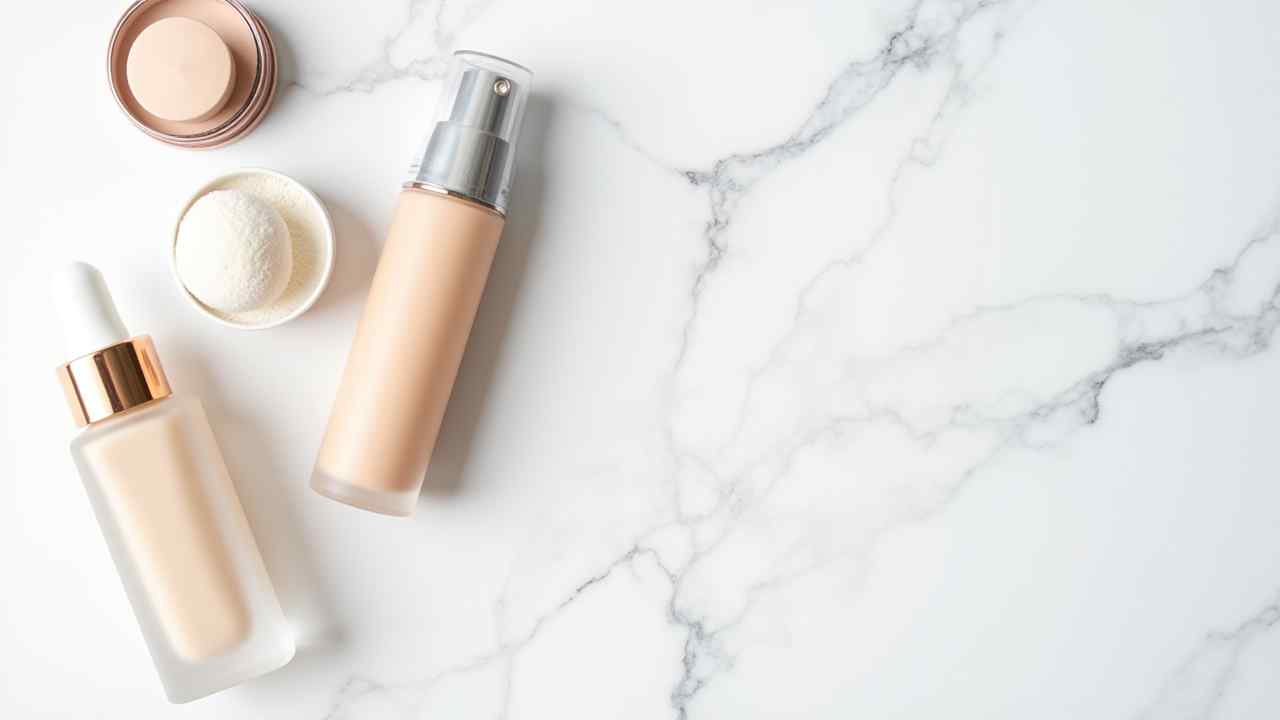
✨ How to Stop Makeup from Separating on Oily Skin (A Pro's Guide)
✨ How to Stop Makeup from Separating on Oily Skin (A Pro's Guide) ✨
It is a very common and frustrating problem. Your makeup looks perfect when you first apply it. But by lunchtime, it has started to separate, slide around, and look patchy. This is a classic sign of oily skin breaking down your foundation.
So, how do you stop makeup from separating on oily skin? The good news is that this is a completely solvable issue. It is not about using more makeup. It is about using the right products and techniques in the right order.
This guide will walk you through a 4-step, bulletproof routine. These are the secrets that makeup artists use. They will help you achieve a flawless, long-lasting finish. Let's get your makeup to stay in place all day. ✅
Step 1: Does Your Skincare Routine Matter?
Yes, your skincare is the most important step. A long-lasting makeup look starts with a well-prepped canvas. Trying to put makeup on overly oily or dehydrated skin is a recipe for disaster. Your skin prep is your foundation.
Do you still need a moisturizer?
Absolutely. This is a common mistake people with oily skin make. They often use harsh cleansers and skip moisturizer. This can strip the skin, causing it to produce even more oil to compensate. This makes your makeup separate faster.
The key is to use a lightweight, oil-free moisturizer. Look for a gel or water-based formula. This will give your skin the hydration it needs. A properly hydrated skin is more balanced and produces less excess oil. This is the first step to how to stop makeup separating on oily skin.
Step 2: What is the Secret Weapon for Oily Skin?
A mattifying primer is your secret weapon. This is a non-negotiable step for long-lasting makeup on oily skin. It creates a barrier between your skin's natural oils and your foundation. This is what keeps your makeup from breaking down.
A good primer for oily skin does a few things. It helps to absorb excess oil throughout the day. It also fills in and blurs the appearance of large pores. This creates a smooth, velvety surface for your foundation.
Apply a thin layer of primer. Focus only on the areas where you get oily. This is usually the T-zone (forehead, nose, and chin). Let it set for a minute before moving on to your foundation. 🛡️
Step 3: How Do You Choose and Apply the Right Foundation?
The type of foundation you use is critical. You need a formula that is designed to work with, not against, your oily skin. Look for foundations with specific keywords on the label. The right formula is essential.
Choose a foundation that is labeled "oil-free" and has a "matte" or "soft-matte" finish. These formulas are specifically made to control oil and last longer. Liquid and powder foundations are often better than creamy, dewy formulas.
Apply your foundation in thin layers. Use a brush or a damp makeup sponge. Building up thin, light layers is much more effective than applying one thick, heavy coat. This prevents the makeup from looking cakey.
Step 4: How Do You "Set" Your Makeup for All-Day Wear?
Once your foundation is on, you need to lock it in place. This is the final and most important step to stop makeup from separating on oily skin. There are two parts to this process: powder and spray.
First, use a fine, translucent setting powder. Use a powder puff or a makeup sponge. Press the powder firmly into your oily areas. This absorbs any initial oil and creates a smooth, matte finish.
Finally, use a mattifying setting spray. This is like a hairspray for your face. It creates an invisible film over your makeup. This helps to make it transfer-proof and oil-resistant. With these steps, your makeup will look fresh for hours. ✨